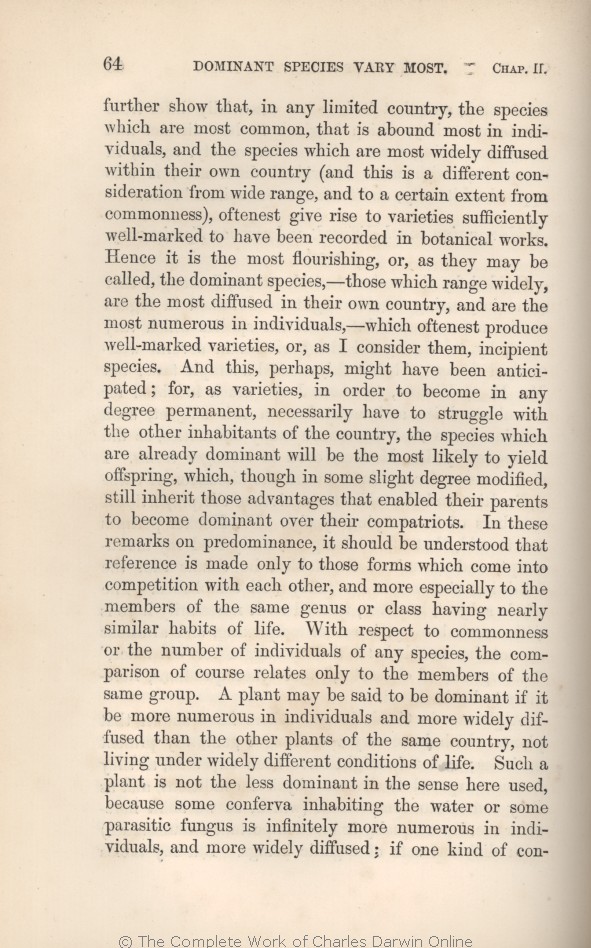further show that, in any limited country, the species which are
most | most 1859 1860 1861 1866 1869 | | the most 1872 |
| oftenest 1861 1866 1869 1872 | | often 1859 1860 |
| species,—those 1866 1869 | | species,— 1859 1860 1861 1872 |
| ..... 1866 1869 | | those 1859 1860 1861 1872 |
| widely, 1861 1866 1869 1872 | | widely 1859 1860 |
| are 1861 1866 1869 1872 | | over 1859 1860 |
| OMIT 1861 1866 1869 1872 |
| world, are the 1859 1860 |
| individuals,—which 1866 1869 | | individuals,— 1859 1860 1861 1872 |
| ..... 1866 1869 | | which 1859 1860 1861 1872 |
| offspring, 1860 1861 1866 1869 1872 | | offspring 1859 |
| ..... 1860 1861 1866 1869 1872 | | will 1859 |
| those 1861 1866 1869 | | the 1872 |
| commonness or 1861 1866 1869 | commonness or 1872 |
| of any 1861 1866 1869 |
| or commonness of 1872 |
| A 1861 1866 1869 |
| One of the higher 1872 |
| plant 1861 1866 1869 | | plants 1872 |
| not living under widely different conditions of life. 1861 1866 1869 |
| which live under nearly the same conditions. 1872 |
| Such a plant 1861 1866 1869 |
| A plant of this kind 1872 |
| in the sense here used, 1861 1866 1869 |
| OMIT 1872 |
| individuals, 1869 1872 | | individuals 1861 1866 |
| diffused; 1861 1866 1869 | | diffused. 1872 |
| if one kind of 1861 1866 1869 |
| But if the 1872 |
| con- ferva 1869 | | conferva 1861 1866 1872 |
|









